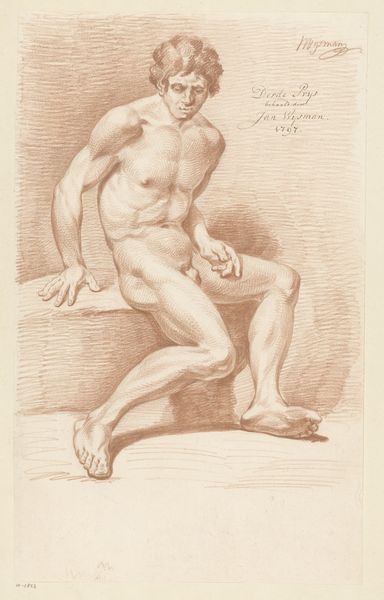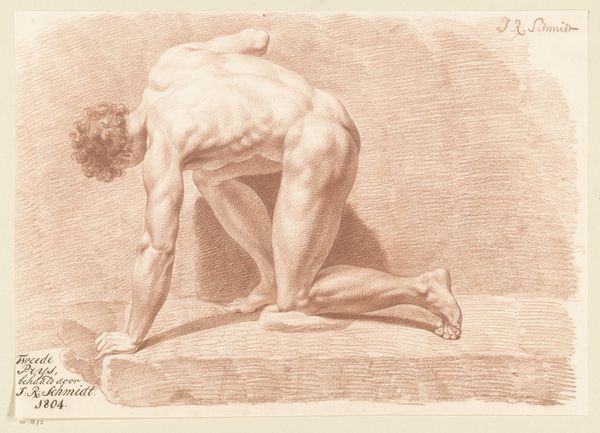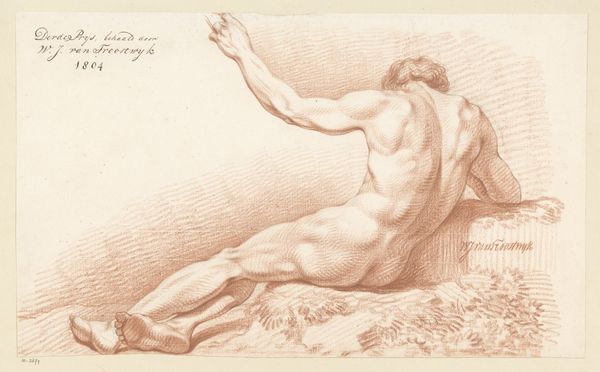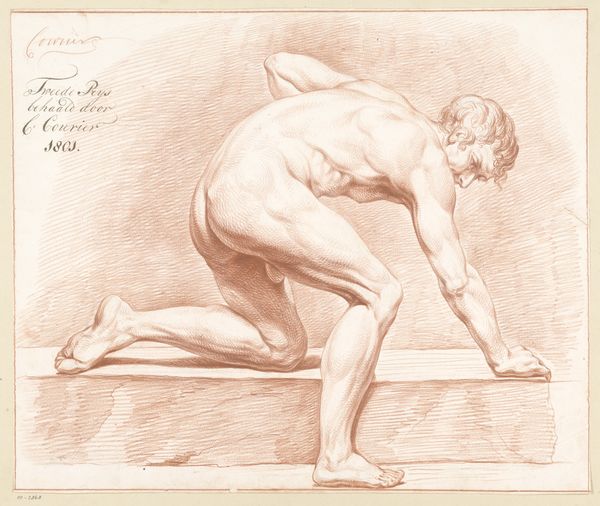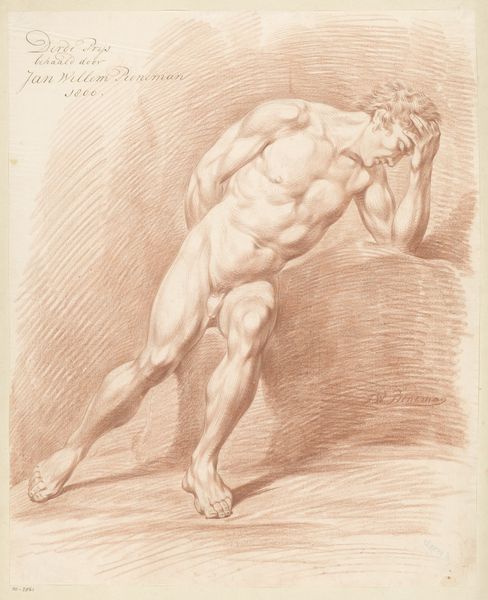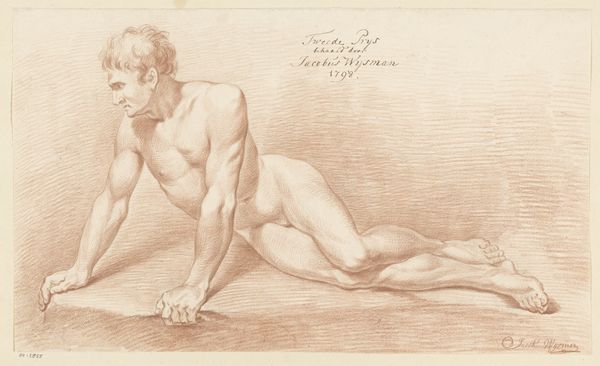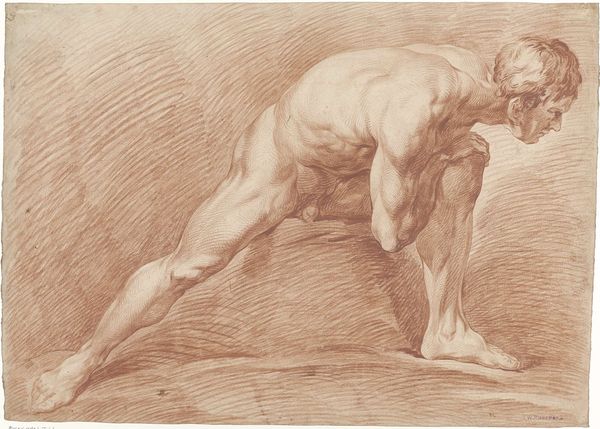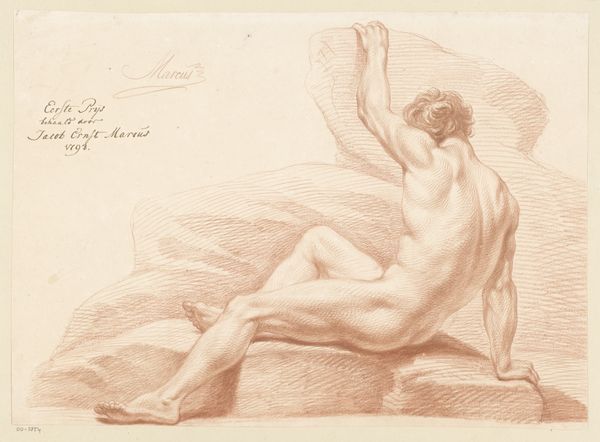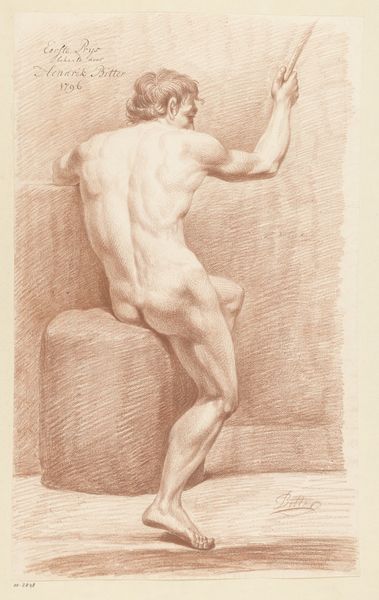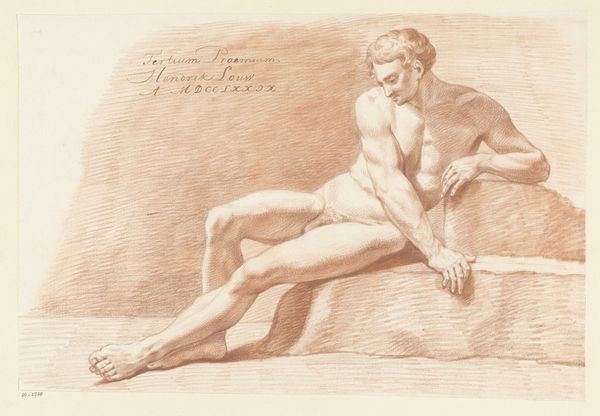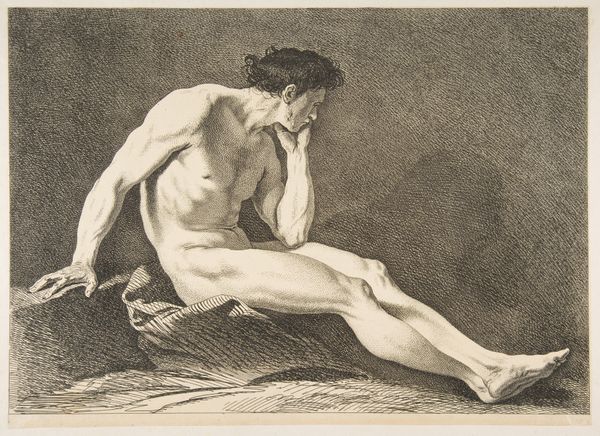
Knielend mannelijk naakt, van opzij gezien (2e prijs 1797) Possibly 1797
0:00
0:00
drawing, pencil
#
portrait
#
drawing
#
facial expression drawing
#
light pencil work
#
pencil sketch
#
charcoal drawing
#
form
#
portrait reference
#
pencil drawing
#
pencil
#
animal drawing portrait
#
portrait drawing
#
facial study
#
academic-art
#
nude
#
portrait art
#
realism
Dimensions: height 336 mm, width 561 mm
Copyright: Rijks Museum: Open Domain
Jacob Ernst Marcus rendered this red chalk drawing, "Kneeling Male Nude, Seen from the Side," in 1797. Observe the figure's posture – kneeling, head bowed, one hand firmly gripping a stone. This pose, reminiscent of supplication or perhaps laborious effort, echoes through art history. Think of the penitent saints of the Renaissance, or even the titans of antiquity, burdened by their tasks. Consider how this posture appears in different contexts. In religious art, it might signify humility before a divine power. In classical sculpture, it could represent the toil and struggle inherent in the human condition. Yet, in each instance, there's a common thread: a deep connection to humanity's primal relationship with the world, and the burden of our own existence. Here, in Marcus's drawing, this ancient motif resurfaces, charged with a new, neoclassical sensibility. The emotional resonance lies not just in the pose itself, but in its ability to tap into our collective memory, engaging us on a subconscious level with themes of labor, humility, and the enduring human spirit.
Comments
No comments
Be the first to comment and join the conversation on the ultimate creative platform.
